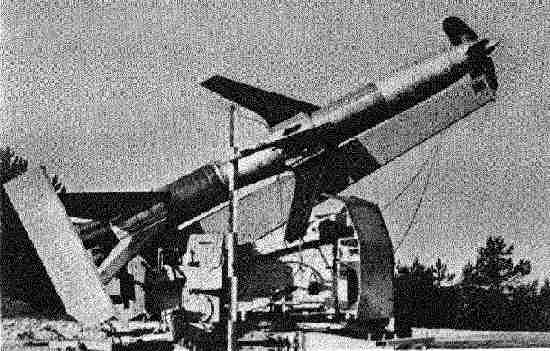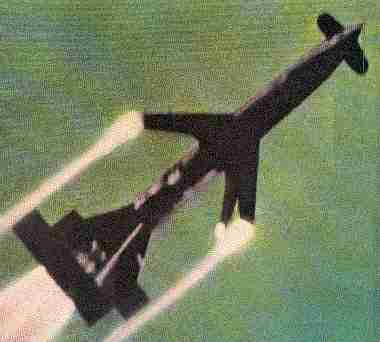|
The famous and versatile Rheinmetall-Borsig company developed the
Rheintochter (Rhine Daughter) ground-to-air missile from 1942 onwards.
The first experimental launching tests began in August 1943, and 82
had been fired and tested by 5 January 1945. Only four out of those 82
had failed. The propulsion mechanism included a motor driven by solid
fuel, and a solid booster unit for initial take-off. Like the
Schmetterling missile, the Rheintochter was guided through radio
command and tracked visually by means of flare attached to the wings
and fins. The warhead composed of 136kg of high explosive and was
armed by a "Kranich" acoustic proximity fuze, like the
X-4. The design altitude of the original Rheintochter was 8,000m,
but the RLM rejected the design, requesting more altitude from the
missile. The power system was then revised to employ solid or liquid
fuels, and the booster rockets were placed outside the missile. It was
also designed to be launched from an immovable launch site in a pit.
This new version came to known as the Rheintochter 3, and production
began in May 1944. Six had been built and fired by January 1945, but
imperfection still plagued the control system. Development and thus
production was canceled on 6 February 1945, as it became clear that
the missile was not likely to be ready in time to have a significant
impact on fate of the Reich. |



